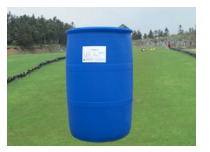Surfactant molecules have both hydrophilic and lipophilic groups, which is also called amphiphilic. Due to this characteristic of surfactants, they can form micelles in water at appropriate concentration: the hydrophilic head is attracted by water outward, and the lipophilic tail is repelled by water and faces inward. In the process of washing clothes, oil stains are pulled to the interior of micelles by lipophilic groups, and the whole micelles are taken away by water.

Surfactants have lipophilic and hydrophilic groups, which are amphiphilic molecules. Water is a strong polar liquid. When surfactant is dissolved in water, according to the principle of similar polarity and opposite polarity, its hydrophilic group and water phase attract and dissolve in water, while its oleophilic group repels water and leaves water. As a result, surfactant molecules (or ions) are adsorbed on the interface of two phases, which reduces the interfacial tension between the two phases. The more adsorption of surfactant molecules (or ions) on the interface, the greater the reduction of interfacial tension.
So why can soap wash oil stains? This is due to the "double faced" properties of surfactants. Soap is composed of metal salts of fatty acids. One end of soap is easily soluble in water, which is called "hydrophilic group"; the other end is insoluble in water but soluble in oil, which is called "hydrophobic group" or "lipophilic group". Because of this special structure, soap can plunge into water at one end and oil at the other. In this way, water pulling soap molecules, soap molecules pulling oil, oil stains off the clothes!
Surfactant is a kind of functional fine chemicals. Due to their amphiphilic structure and properties, surfactants self polymerize in solution to form various kinds of ordered molecular assemblies, such as micelles, reverse micelles, vesicles, liquid crystals, etc. The size of the particles or the thickness of the aggregated molecular layer of these ordered molecular assemblies are close to the order of nanometer, which can provide suitable sites and conditions for the formation of ultrafine particles with "quantum size effect". Moreover, the molecular aggregates themselves may have similar "quantum size effect".
Therefore, the ordered molecular assemblies of surfactants exhibit various practical functions, such as emulsification, solubilization, wetting, adsorption, permeation, dispersion, defoaming, thickening and lubrication. They are used as auxiliaries for printing and dyeing, pesticide emulsifiers, dispersants for polymer emulsion polymerization, and can also be widely applied in mining, petroleum, emulsion polymerization and other industries. At the same time, the application of colloidal rheology, microemulsion and liquid crystal template has also attracted people's attention. In recent years, surfactants play a very important role in the preparation of inorganic materials, nano and nano composite materials, molecular sieves and porous materials.